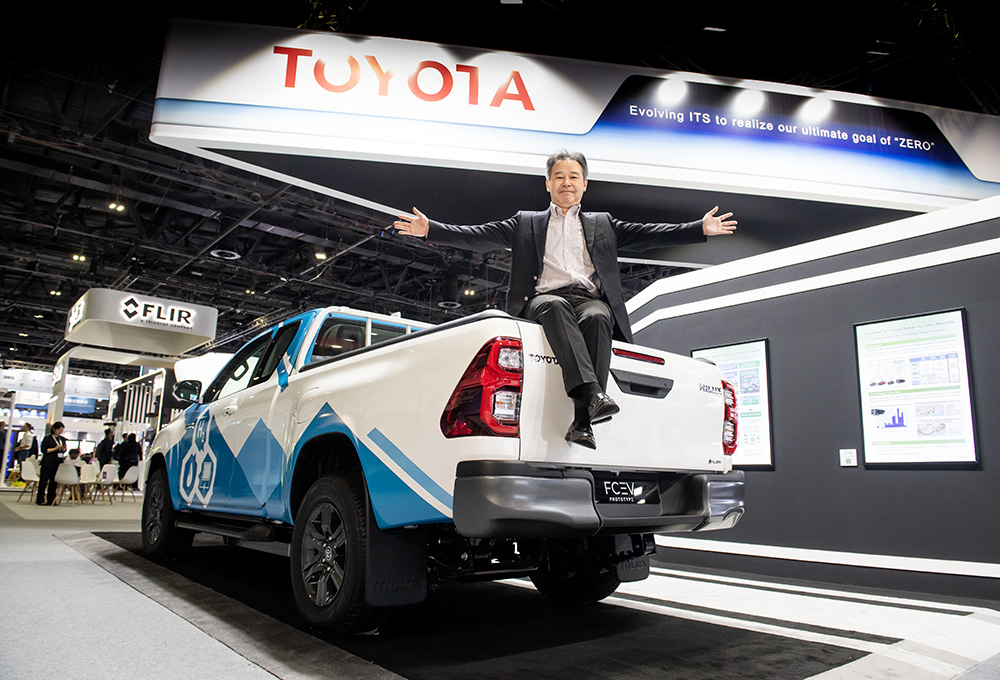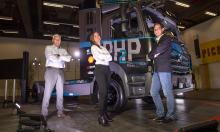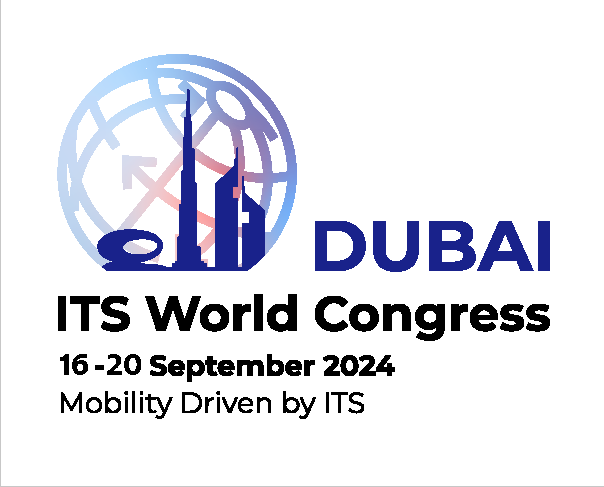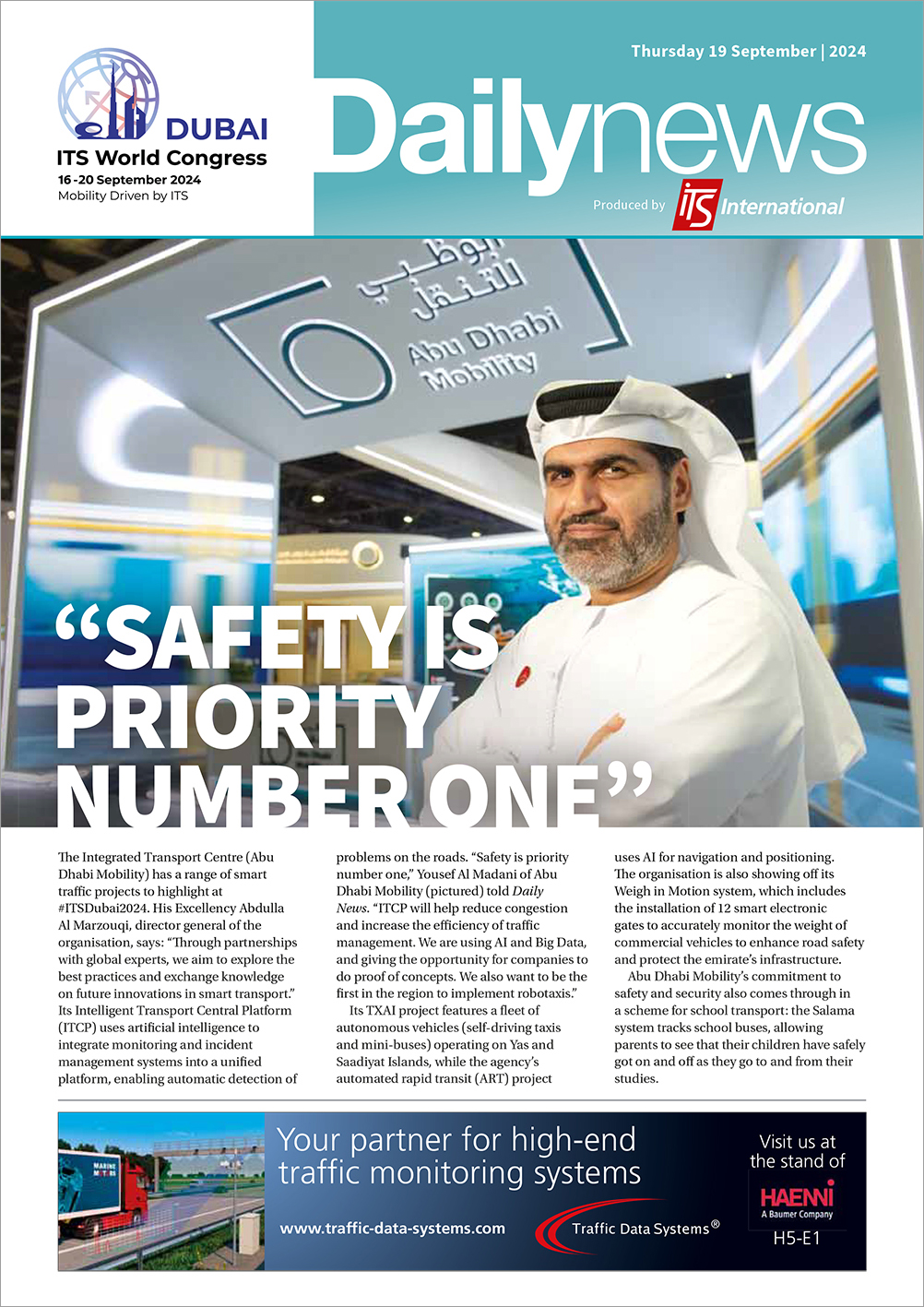
Fossil fuels can be transformed into hydrogen with a process that entails carbon capture, use and storage – CCUS technology. The Middle East is poised to be a centre of excellence for creating this so-called ‘blue hydrogen’ because of the region’s abundant fossil fuels. Meanwhile, the region is creating ‘green hydrogen’ because of its abundance of renewable energy – produced from solar panels and wind turbines, to produce the hydrogen itself.
Visitors to the Toyota stand will get a peek at the groundbreaking hydrogen fuel cell-powered Toyota’s Hilux FCEV (fuel cell electric vehicle) Prototype pickup truck as well as a close-up of its hydrogen engine. The vehicle produces its electricity through a chemical reaction between hydrogen and oxygen in a fuel cell stack. Refuelling hydrogen tanks from a pump takes less than five minutes.
Such technology, including Toyota’s Mirai, the world’s first production hydrogen-powered car launched in 2014, is today’s vision for tomorrow’s cleaner mobility. Dubai, and the Middle East in general, are central for that vision to become reality and Toyota and its partners are here and at the forefront.
For example, Toyota is carrying out fuel cell module research at King Abdullah University of Science and Technology. In Saudi Arabia, the car maker is involved in a hydrogen refuelling station with Saudi Aramco and Air Products, similarly in Dubai with ENOC and DEWA. In Oman, Toyota is collaborating on a 16-unit Mirai contract for Oman Shell’s hydrogen project.
This green future of safer mobility and carbon neutrality is here now for all to see on Toyota’s stand at the Congress.
Stand H7-C16












